Species †U. tschizhovi Rank Genus | Class Reptilia Phylum Chordata | |
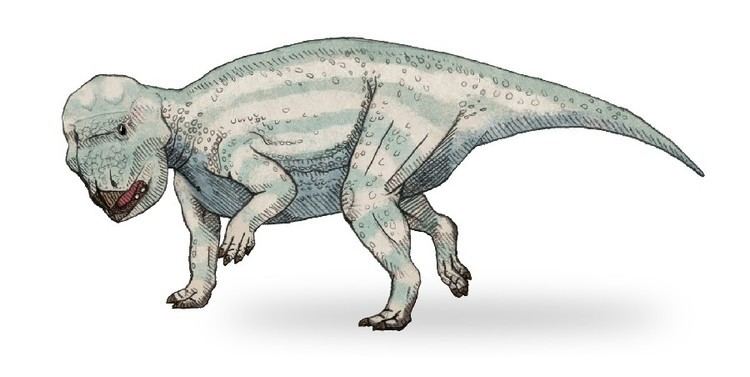 | ||
Similar Montanoceratops, Graciliceratops, Prenoceratops, Bagaceratops, Breviceratops | ||
Udanoceratops (meaning "Udan-Sayr horn face") is an extinct genus of leptoceratopsid ceratopsian dinosaur. It lived during the Late Cretaceous Period in the Campanian faunal stage. Its fossils were found in Mongolia.
Contents
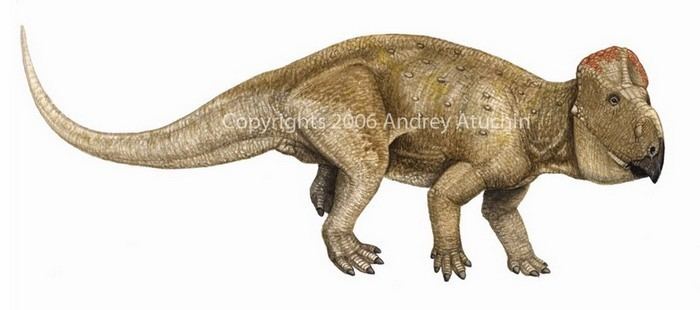
Prehistoric facts special 61 udanoceratops utahraptor
Discovery
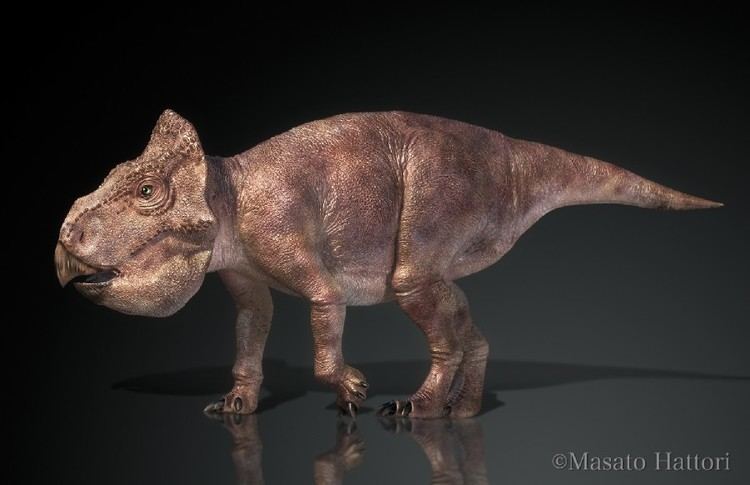
Udanoceratops is known only from the holotype specimen, a large and almost complete skull, which was 60 centimeters (24 inches) long and moderately well preserved. It is the largest leptoceratopsid known so far. Like other leptoceratopsids, the skull had a short frill and no horns over the eyes or nose; the animal is estimated at about 4 meters (13 feet) long. The holotype was collected in the Udan-Sayr locality from the Djadokhta Formation in Ömnögovi Province, dating to the Campanian stage of the Late Cretaceous period, about 83.5-70.6 million years ago. In 2007, Udanoceratops aff. tschizhovi was described based on a single specimen from the Campanian-stage Barun Goyot Formation, in Dornogovi Province.
Etymology
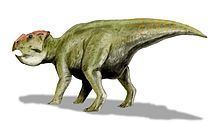
Udanoceratops was first named by Sergei Kurzanov in 1992 and the type species is Udanoceratops tschizhovi. The generic name is derived from the name of the locality in which the holotype was found (Udan-Sayr) and Greek ceras/κέρας meaning "horn" and -ops/ωψ meaning "face".
Classification
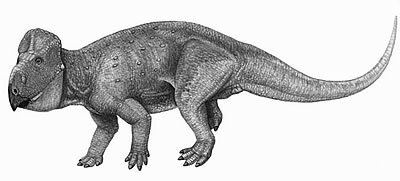
Udanoceratops belonged to the Ceratopsia (the name is derived Greek meaning 'horned face'), a group of herbivorous dinosaurs with parrot-like beaks which thrived in North America and Asia during the Cretaceous Period. Within the order, Chinnery places it within the Leptoceratopsidae, as the only Asian representative, along with the North American Leptoceratops, Montanoceratops and Prenoceratops.
Diet
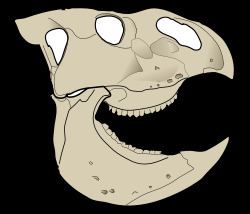
Udanoceratops, like all ceratopsians, was a herbivore. The short, deep jaws would have given the animal a powerful bite. The toothless beak would have served to grasp and crop stems or leaves, and as in other leptoceratopsids, the teeth would have met with an action that combined shearing and crushing. The feeding adaptations seen in leptoceratopsids suggest a diet of relatively tough food items, however little is known about the plants that grew in the Gobi Desert during the Cretaceous.
